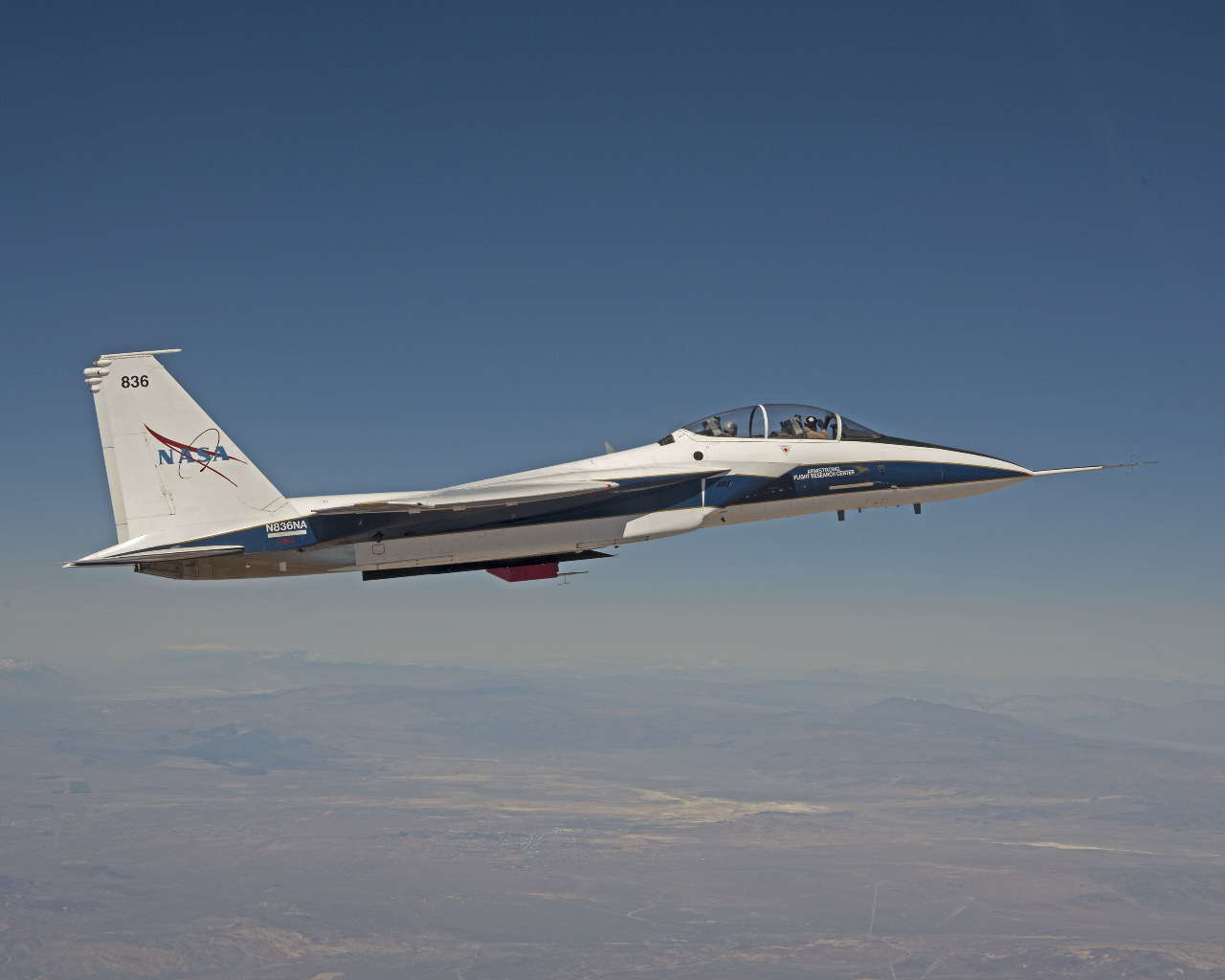An air data probe intended to improve investigation of sonic booms is flying on the F-15B aircraft at NASA's Armstrong Flight Research Center in California. NASA's goal for sonic boom research is to find ways to control and lessen the noise from shockwaves so that federal regulators will allow commercial supersonic flight overland.
The current six-flight series is set to continue through about mid March. Much like earlier flight tests in 2011 and 2014, the Eagle Aero Probe is flying on the F-15B's centreline instrument pylon located under the aircraft's fuselage. The original probe has been redesigned by NASA for this phase.
The probe will be tested in flight and the results will be compared with a traditional NACA-style probe that was flown on the centreline instrumented pylon in 2012. In addition to obtaining air data measurements underneath the F-15B, the probe will measure the strength of a shockwave generated from an as yet undetermined part of the F-15B aircraft structure. Pressure sensors are located just four inches from the pressure ports on the nosecone.
Subsequent flights will look at shockwaves generated by another nearby supersonic aircraft and are expected to obtain more accurate data than traditional probes, Pauer explained.
Previous generations of the Eagle Aero Probes flew on the F-15B as part of a continuing effort that began as a NASA Research Announcement effort in 2009. The probes were tested in the Unitary Plan Wind Tunnel at NASA's Langley Research Center in Hampton prior to flight research at NASA Armstrong.
From the data obtained during this current flight phase, a key deficiency with the previous generations of the probe appears to be solved. A heater control system added into the probe keeps the pressure transducer temperatures stable at 150°F, minimizing temperature effects on the pressure transducers and resulting in more accurate pressure measurements.

